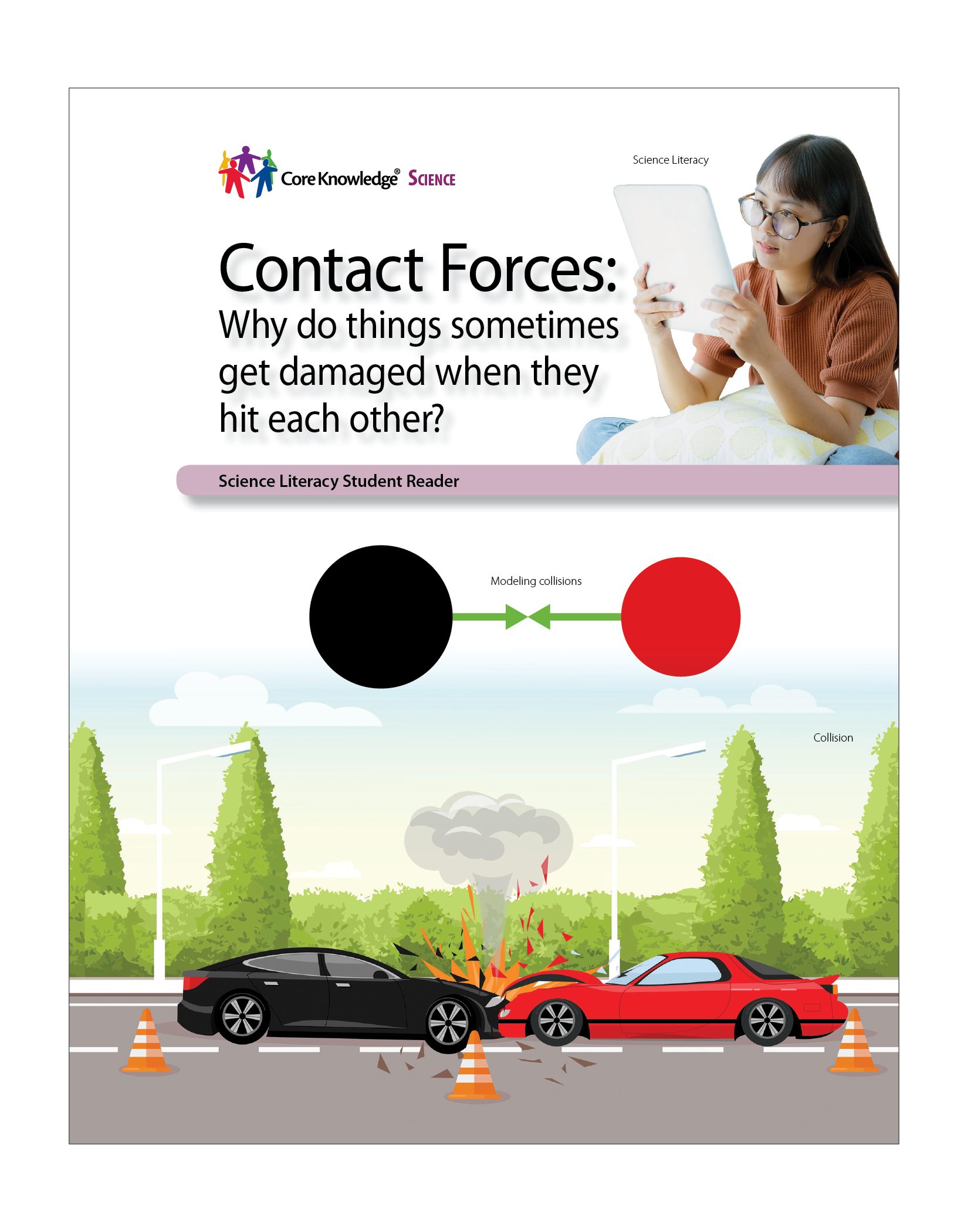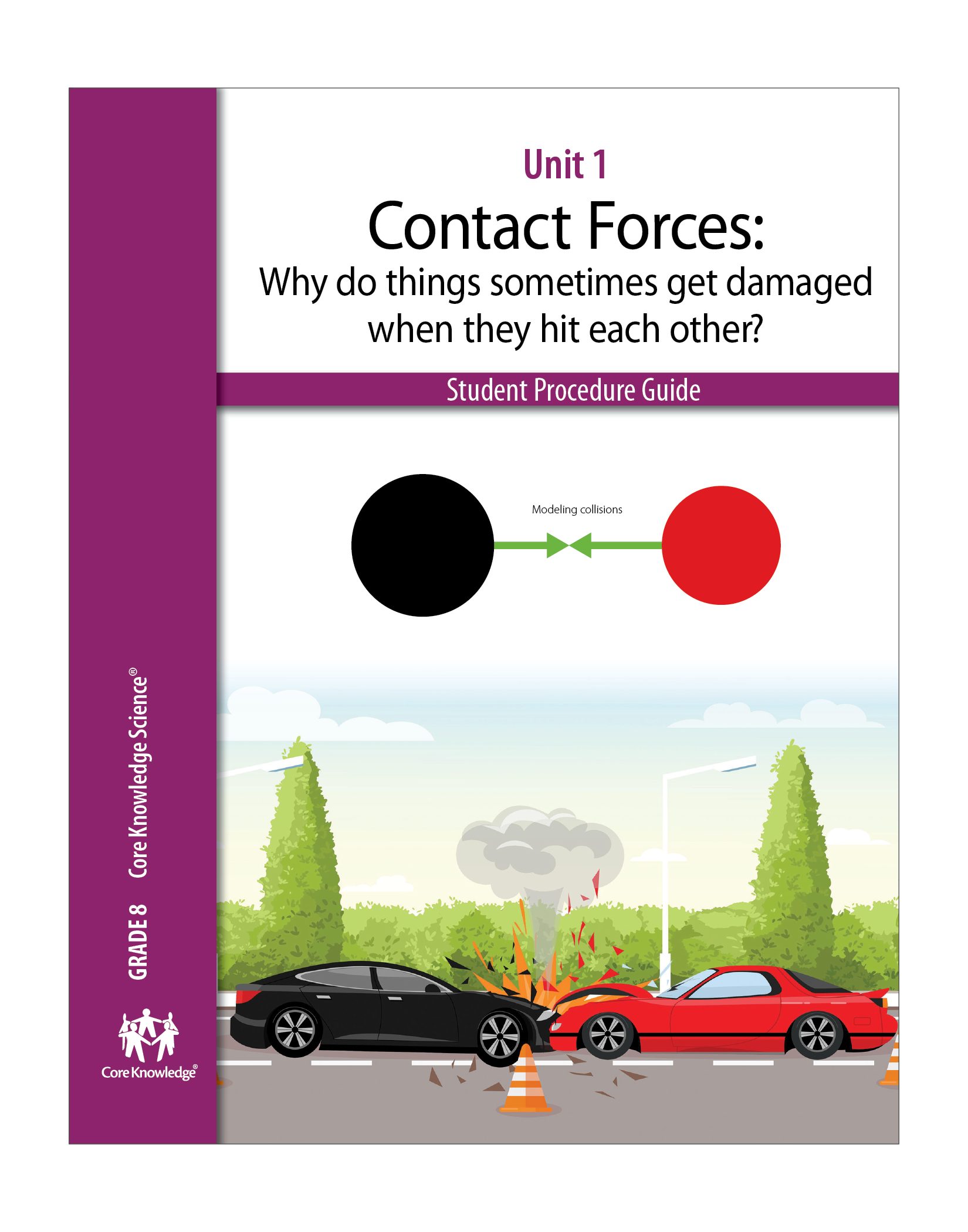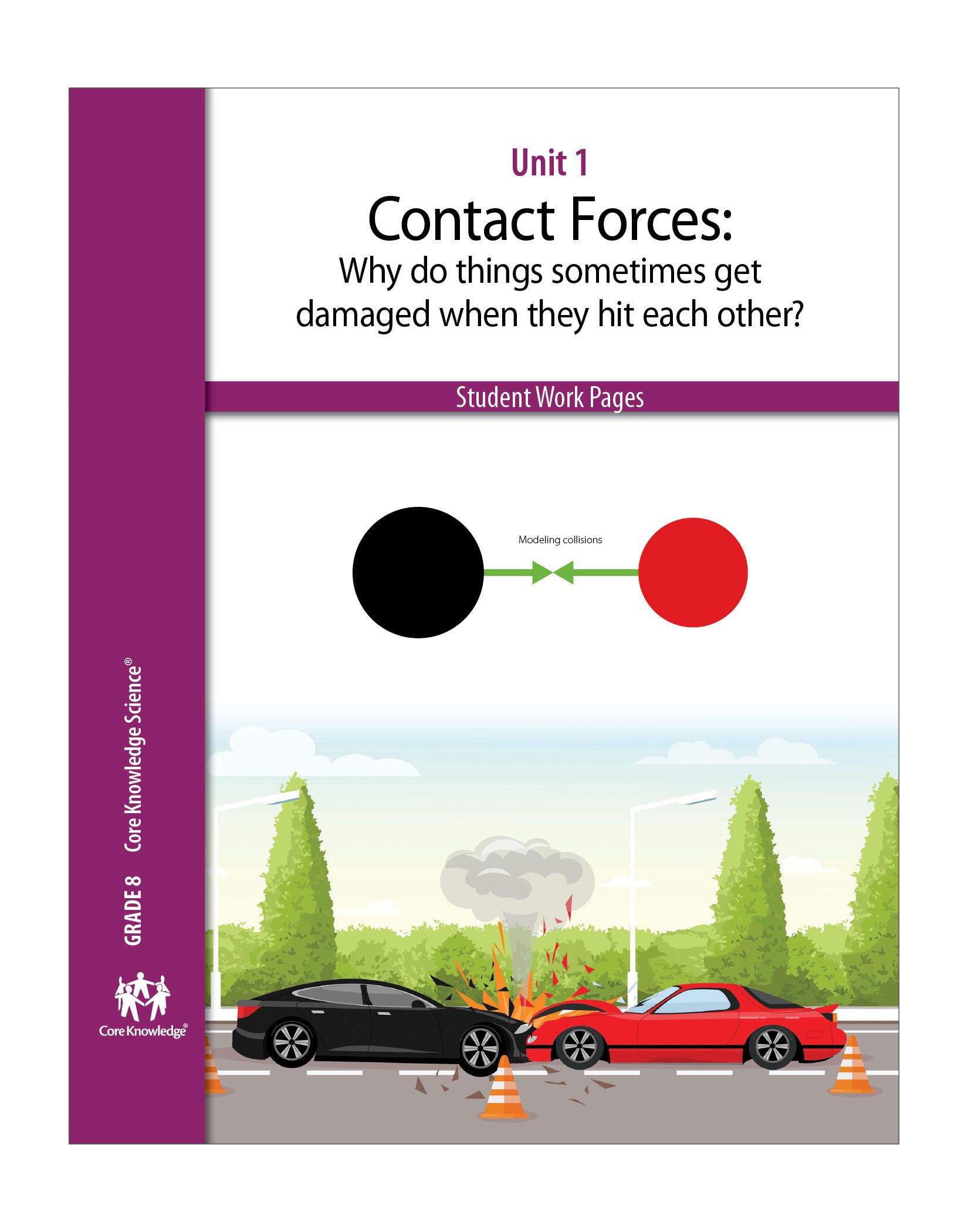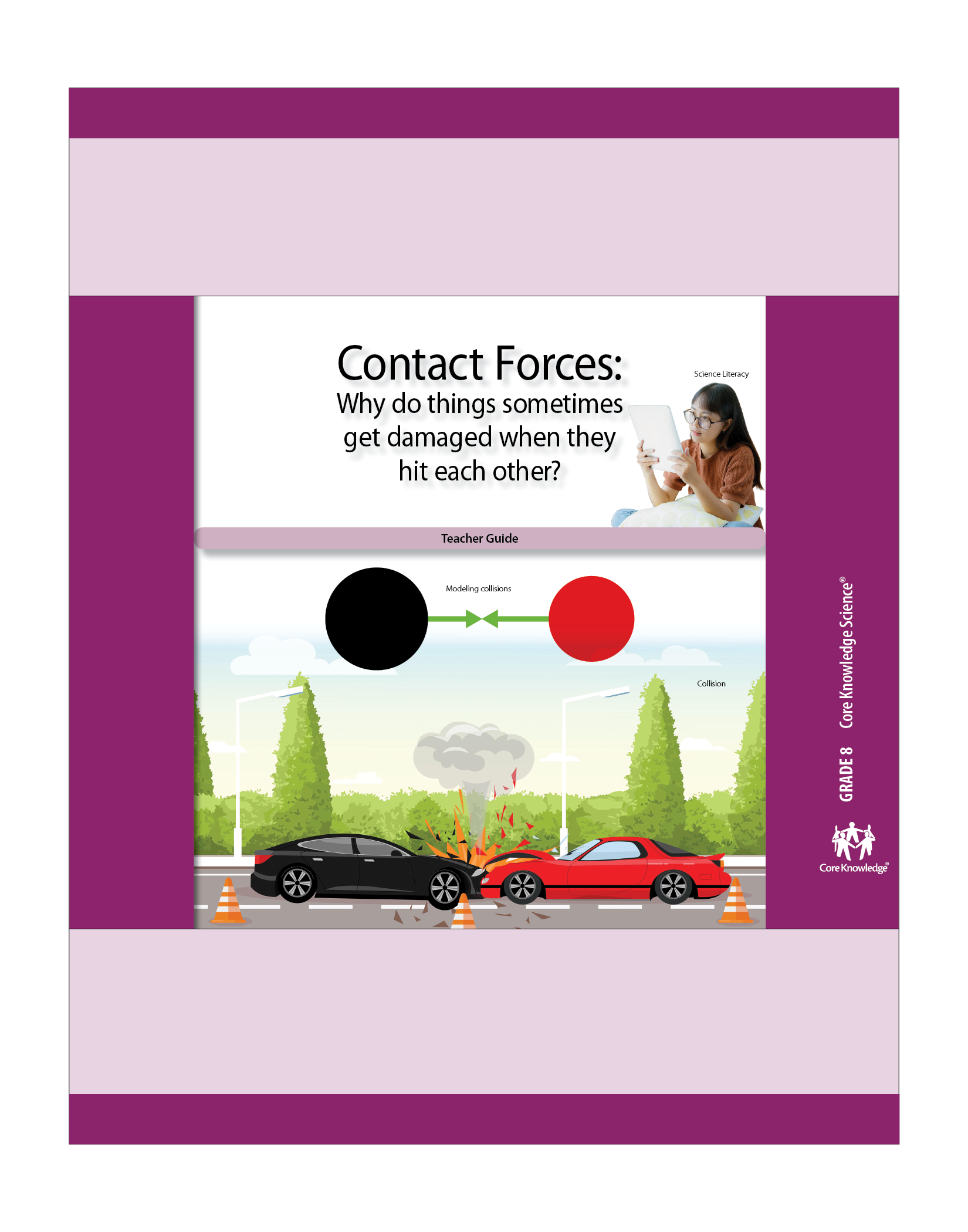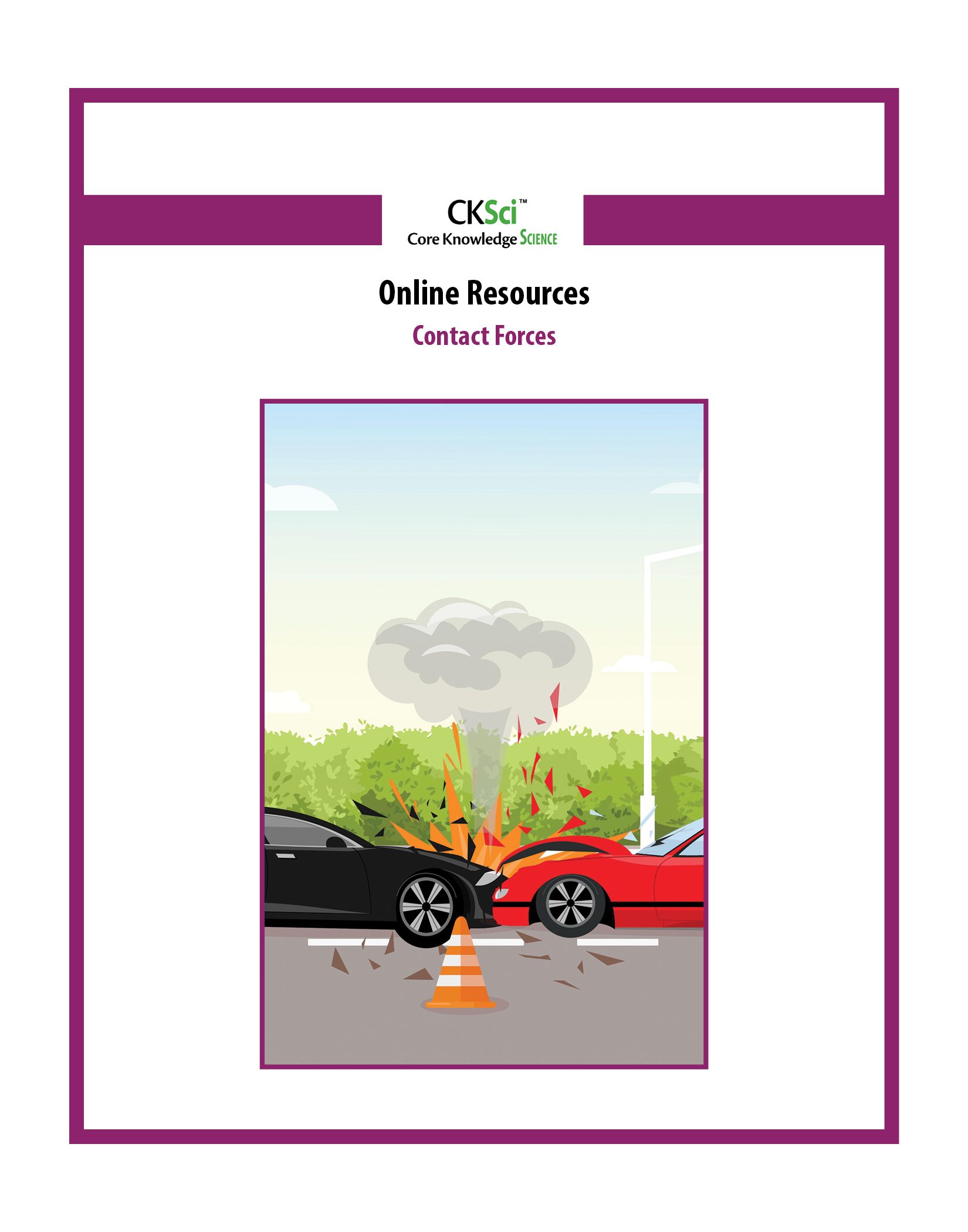
CKSci Unit 1: Contact Forces
Focus:
In this unit, students investigate the phenomenon of collisions and what happens to objects that collide. The subtitle of this unit is Why do things get damaged when they hit each other? This is a phenomenon that students experience when they see any two objects collide. What happens to the shape of each of the colliding objects? How does the mass of each object affect the damage in a collision? How do the speeds of the two objects affect the nature of the collision? Can we use the concept of force to help explain collisions? This unit allows students to observe collision phenomena in detail and then start asking questions, formulating explanations, as well as setting up and conducting activities and research. Then students will work with their classmates to analyze their shared experience and formulate new questions and developing new strategies for answering them. Students explore concepts that include the following:
- What causes changes in the motion and shape of colliding objects?
- Do all objects change shape or bend when they are pushed in a collision?
- How much does doubling the speed or doubling the mass affect the kinetic energy of an object and the resulting damage it can do in a collision?
As students move through their day-to-day activities, they will also read Core Knowledge literacy selections. These include factual articles, history of the sciences, art and literature, spotting bad science in the media and advertisements, graphics comprehension, research-type articles, reliability of sources, and other areas of science literacy.
Number of Lessons:
- Teacher Guide: 16 Lessons
- Student Reader: 5 Collections
Instruction Time (Student Reader):
- Lessons are designed to be completed in one or more class periods.
- A Pacing Guide found in Online Resources offers a suggested time to complete the entire unit if class is held each day.
- The entire unit should take about 33 days to complete if class is held each day.
- A complete list of Materials needed to complete the unit is provided in Online Resources.
Additional Search Terms:
scientific literacy • speed • mass • collision • kinetic energy • force • velocity • newton • breaking point • elastic limit • deform • potential energy • projectile • flammability • air resistance • engineering design • constraint • criteria • shareholders • nonfiction • informational text

